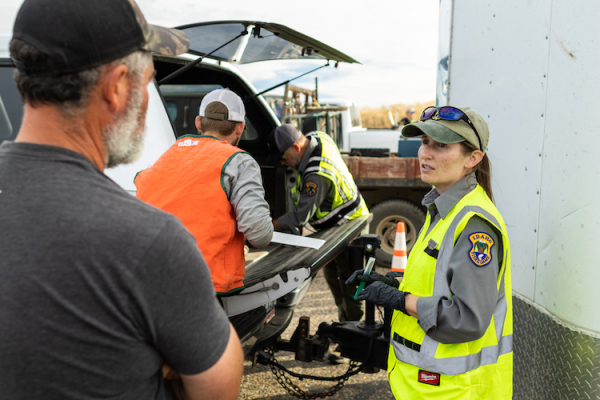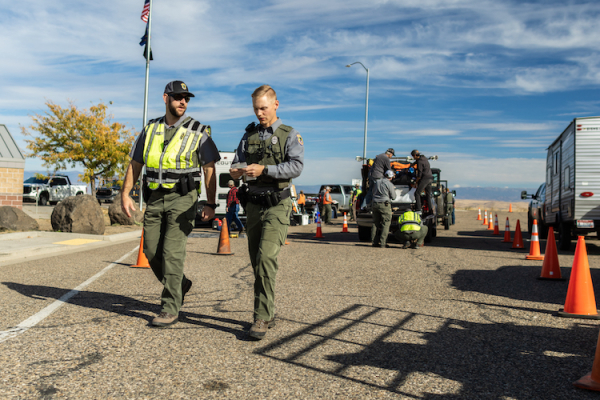

|
Check stations help Fish and Game gather important harvest data and get CWD samples.
Check stations are an opportunity for Fish and Game staff to talk to thousands of hunters and see thousands of harvested animals. The goal is for Fish and Game personnel to get information and learn what's happening in the field and also answer questions, collect samples for chronic wasting disease, and then quickly get folks back on their way. Note: Anglers and trappers also have to stop at check stations if coming from or going to those activities.
If you didn't harvest any game, staff will ask you some questions and then, boom, you're done. But remember you still have to stop, and you can be cited for bypassing a check station.
If you have harvested game, Fish and Game staff will want to look at the animal—as well as your license and tag. In the interest of saving you and everyone else's time, keep your animal in an easily accessible spot. It only takes a few minutes to collect all the needed data.
Most check stations are “management stations” where the main goal is to collect data from harvested animals. You will typically see these in the same places year after year. You may also see an enforcement check station, which are unannounced and in different locations.
Common violations to avoid
Year after year, Fish and Game staff working check stations see repeated mistakes, which may result in a reminder, a written warning, or possibly even a citation. Hunters can avoid that situation by brushing up on these common violations:
Failure to properly validate your tag
Make sure the notches for the correct day and month are fully removed from your tag immediately after you harvest the animal. Again, completely notch the tag. A slice through the day and date won't cut it.
If the animal is intact, the tag can be placed on the antlers. But if it's already been quartered, the tag must be attached to the largest portion of the meat (along with evidence of sex) until it is processed and reaches the place of final storage or consumption.
Now take note, hunters: If you’re in a CWD Management Zone, there are rules for whole carcasses, so the tag would need to be placed on the largest portion of the meat.
Failure to have a proxy statement
One is issued with your tag, and if you’re transporting game for someone else, you must have a proxy statement. Proxy statements are also available on page 101 in the 2025 Big Game Seasons and Rules booklet, along with other important rules.
Maintain proof of species
In seasons restricted to mule deer or white-tailed deer only, proof of species must remain naturally attached, as demonstrated in this informational video. If you remove the head, you must leave the fully-haired tail attached.
Failure to keep evidence of sex
Even in either-sex hunts, the head or other evidence of sex needs to be naturally attached to the carcass until you get it home. In hunts with antler-point restrictions, the antlers must accompany the carcass. For more information about preserving evidence of sex see page 101 of the 2025 Big Game Seasons and Rules booklet.